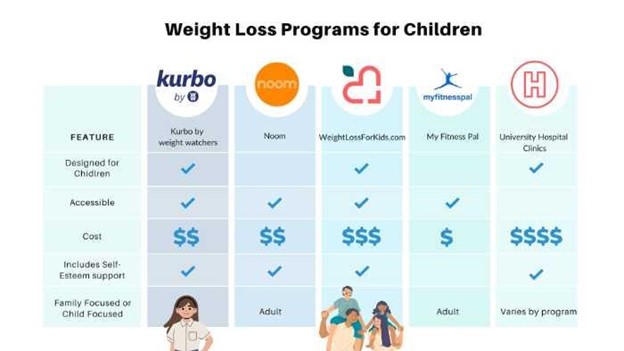All Categories
Featured
Table of Contents
-1
Commanders of armed forces bases must analyze their centers to determine and get rid of conditions that motivate several of the consuming practices that promote overweight. Some nonmilitary companies have actually boosted healthy and balanced consuming choices at worksite dining facilities and vending devices. Numerous publications recommend that worksite weight-loss programs are not extremely efficient in reducing body weight (Cohen et al., 1987; Forster et al., 1988; Frankle et al., 1986; Kneip et al., 1985; Loper and Barrows, 1985), this might not be the instance for the military due to the better controls the armed force has over its "workers" than do nonmilitary companies.
-1Administration of overweight and weight problems calls for the active engagement of the individual. Nutrition specialists can give people with a base of info that allows them to make educated food choices. Nourishment education is unique from nourishment therapy, although the contents overlap significantly. Nourishment therapy and nutritional administration tend to focus more directly on the inspirational, emotional, and mental issues related to the existing job of weight loss and weight administration.
-1Unless the program participant lives alone, nourishment administration is rarely efficient without the involvement of member of the family. Weight-management programs may be split into two phases: weight loss and weight upkeep. While exercise may be the most vital component of a weight-maintenance program, it is clear that dietary limitation is the critical part of a weight-loss program that influences the rate of weight loss.
-1Therefore, the energy equilibrium equation may be affected most dramatically by minimizing power consumption. weight loss programs. The number of diets that have actually been proposed is virtually numerous, however whatever the name, all diet plans include reductions of some proportions of healthy protein, carb (CHO) and fat. The following areas analyze a number of arrangements of the percentages of these three energy-containing macronutrients
Weight Loss Programs – Ardross

-1
This kind of diet regimen is composed of the sorts of foods a person normally eats, however in lower quantities. There are a number of factors such diet plans are appealing, yet the major reason is that the recommendation is simpleindividuals need only to adhere to the U.S. Division of Agriculture's Food pyramid.
-1In using the Pyramid, however, it is essential to emphasize the portion sizes used to establish the suggested variety of portions. For instance, a bulk of customers do not realize that a portion of bread is a single slice or that a part of meat is just 3 oz. A diet plan based upon the Pyramid is conveniently adjusted from the foods served in team settings, including armed forces bases, since all that is required is to eat smaller sized parts.
-1A lot of the researches published in the clinical literary works are based upon a well balanced hypocaloric diet plan with a reduction of energy intake by 500 to 1,000 kcal from the client's typical caloric intake. The U.S. Food and Drug Management (FDA) suggests such diets as the "conventional treatment" for scientific tests of new weight-loss medicines, to be used by both the energetic representative group and the placebo group (FDA, 1996).
-1The largest quantity of weight reduction happened early in the researches (about the first 3 months of the plan) (Ditschuneit et al., 1999; Heber et al., 1994). One study discovered that women lost more weight between the 3rd and 6th months of the strategy, however guys shed most of their weight by the 3rd month (Heber et al., 1994).
Weight Loss Consultation
-1In contrast, Bendixen and coworkers (2002) reported from Denmark that meal replacements were associated with negative results on fat burning and weight upkeep. This was not an intervention study; individuals were followed for 6 years by phone interview and information were self-reported. Out of balance, hypocaloric diet regimens limit one or even more of the calorie-containing macronutrients (healthy protein, fat, and CHO).
-1Most of these diet regimens are published in books focused on the ordinary public and are frequently not written by health and wellness specialists and commonly are not based upon sound scientific nutrition principles. For some of the nutritional regimens of this kind, there are couple of or no research study publications and basically none have been researched lengthy term.
Optifast
-1The major types of unbalanced, hypocaloric diet regimens are discussed below. There has been substantial debate on the optimal proportion of macronutrient intake for adults. This research study normally compares the amount of fat and CHO; nevertheless, there has actually been increasing interest in the role of protein in the diet plan (Hu et al., 1999; Wolfe and Giovannetti, 1991).
-1The size of these studies that examined high-protein diets only lasted 1 year or much less; the long-term security of these diet plans is not understood. Low-fat diets have been among one of the most commonly utilized treatments for excessive weight for lots of years (Astrup, 1999; Astrup et al., 1997; Blundell, 2000; Castellanos and Rolls, 1997; Flatt, 1997; Kendall et al., 1991; Pritikin, 1982).
-1Outcomes of recent studies suggest that fat limitation is also important for weight maintenance in those who have actually reduced weight (Flatt 1997; Miller and Lindeman, 1997). Dietary fat decrease can be achieved by counting and restricting the variety of grams (or calories) consumed as fat, by limiting the intake of specific foods (as an example, fattier cuts of meat), and by replacing reduced-fat or nonfat versions of foods for their higher fat counterparts (e.g., skim milk for whole milk, nonfat frozen yogurt for full-fat gelato, baked potato chips for fried chips) (Dywer, 1995; Miller and Lindeman, 1997).
-1A number of aspects may contribute to this seeming contradiction. All individuals show up to uniquely ignore their intake of dietary fat and to reduce typical fat intake when asked to tape it (Goris et al., 2000; Macdiarmid et al., 1998). If these results reflect the basic propensities of individuals finishing dietary studies, then the quantity of fat being taken in by obese and, perhaps, nonobese people, is more than regularly reported.
Personalized Weight Loss Plan
-1They located that low-fat diet plans continually demonstrated significant weight loss, both in normal-weight and overweight individuals. A dose-response relationship was likewise observed in that a 10 percent decrease in nutritional fat was predicted to produce a 4- to 5-kg fat burning in a specific with a BMI of 30. Kris-Etherton and coworkers (2002) discovered that a moderate-fat diet (20 to 30 percent of power from fat) was most likely to promote weight reduction due to the fact that it was much easier for individuals to follow this kind of diet regimen than to one that was severely limited in fat (< 20 percent of power).

-1
Very-low-calorie diets (VLCDs) were used thoroughly for fat burning in the 1970s and 1980s, however have actually fallen under disfavor over the last few years (Atkinson, 1989; Bray, 1992a; Fisler and Drenick, 1987). FDA and the National Institutes of Wellness specify a VLCD as a diet that supplies 800 kcal/day or much less. lap band. Given that this does not take right into account body dimension, a more clinical interpretation is a diet plan that supplies 10 to 12 kcal/kg of "desirable" body weight/day (Atkinson, 1989)
-1The portions are eaten three to five times daily. The key objective of VLCDs is to generate relatively fast weight loss without substantial loss in lean body mass. To accomplish this objective, VLCDs usually supply 1.2 to 1.5 g of protein/kg of preferable body weight in the formula or as fish, lean meat, or fowl.
Latest Posts
Which Is The Best Best Online Personal Training Programs Provider
What Is The Best Best Online Fitness Coach Company
Best Nutritionist – Mindarie 6030